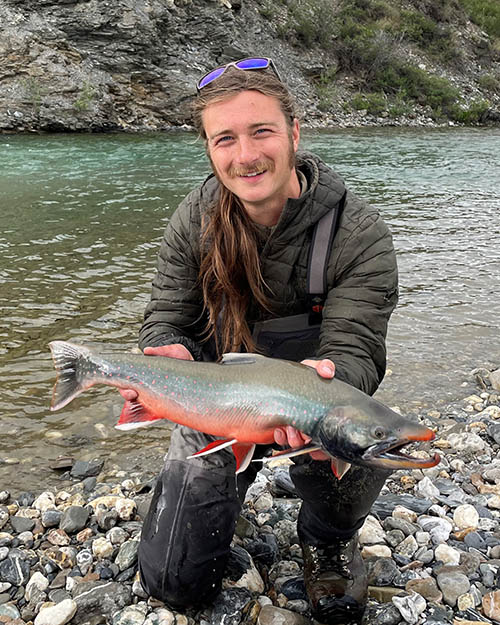B.S. Fisheries
2018
Joe grew up in Juneau, Alaska, where he became fascinated with wild creatures at an
early age. He began attending UAF in 2014, and was able to travel across the state
to work on field projects for the Alaska Department of Fish and Game during the summers.
At UAF, he completed an undergraduate thesis examining the diets and growth rates
of native and invasive populations of northern pike under the guidance of Dr. Peter
Westley. He graduated with his B.S. in Fisheries in 2018 and began working for the
ADF&G Division of Sport Fish in Fairbanks. For his master’s thesis, he will be examining
the seaward migration and overwintering habits of anadromous Dolly Varden in northwestern
Alaska using otolith microchemistry with Dr. Andrew Seitz. Joe enjoys fly fishing,
hunting, skiing, and generally being outside in his free time.
- Otolith microchemistry
Dolly Varden (Salvelinus malma) are a widely distributed salmonid in Alaska. In their anadromous form, they display a complex suite of migratory strategies to access rich oceanic feeding grounds in summer and freshwater habitats for spawning and overwintering. In northwestern Alaska, Dolly Varden are an important subsistence fish, and in some communities they are the most commonly harvested fish for subsistence. Previous research indicates that Dolly Varden in this region display spawning and migration strategies that are unique among Dolly Varden populations in Alaska. Despite the need for a comprehensive understanding of migratory habits to properly assess population dynamics and exposure to harvest, considerable information gaps exist for these populations. Assessment of seaward migration frequency and overwintering-site fidelity has remained difficult due to the remoteness of the area and the high cost and logistical challenges associated with conventional tracking studies. I am using the strontium (Sr) concentrations and Sr isotope signatures of otoliths to evaluate seaward migration and overwintering histories of Dolly Varden captured in spawning rivers and in commercial and subsistence fisheries, which may help identify spawning populations and life history strategies that are encountered more frequently in harvests and elucidate the poorly-understood interchanges between overwintering and spawning areas.



